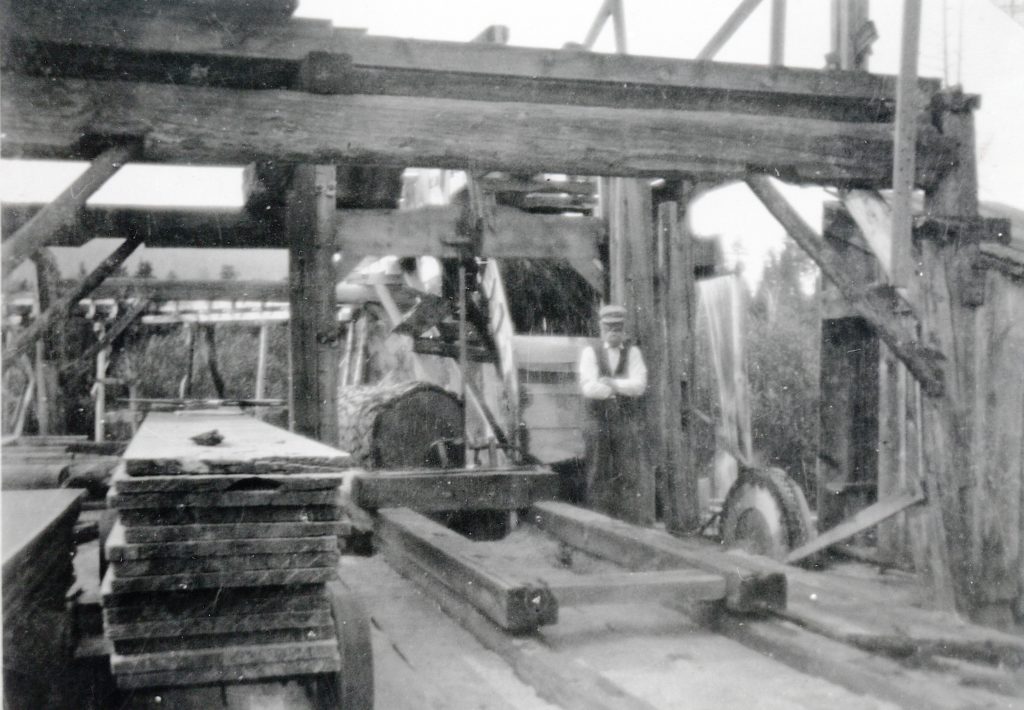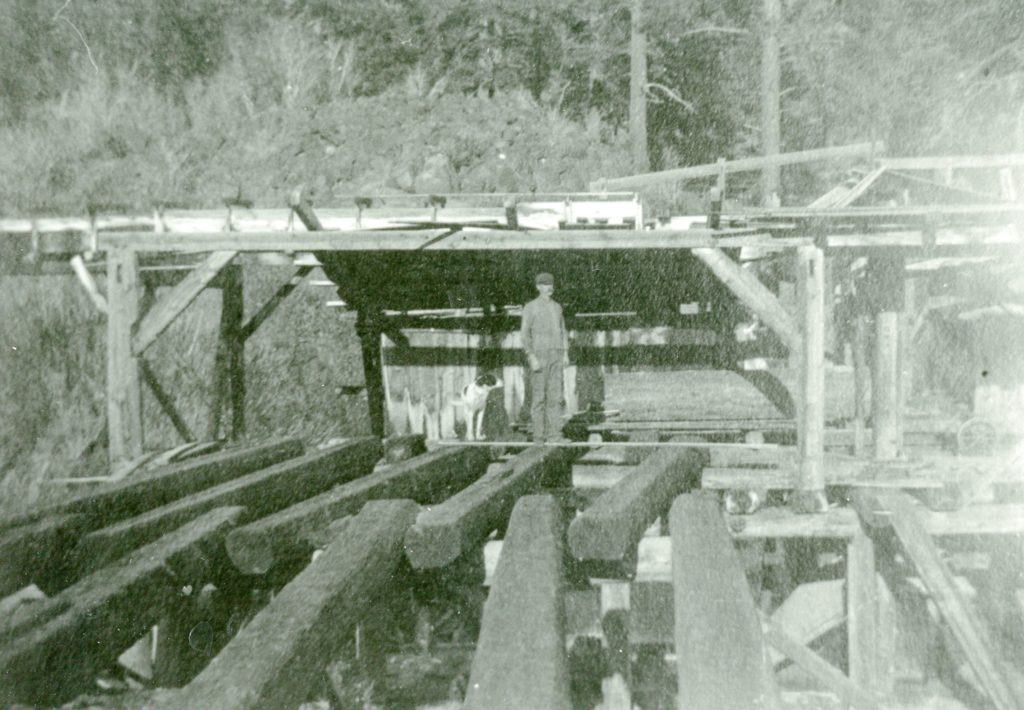
Just like one-room school houses, rural post offices, small sawmills dotted the landscape. One of these mills was the Hurlbut mill at the upper end of Willow Creek Valley. In 1872, Adam Jakobs saw the potential for the lumber market and built a sawmill along Willow Creek, two miles upstream from the Neuhaus (Murrer) Ranch. In 1878, Jakobs sold the mill to P.D. Hurlbut and Jakobs returned to his ranching activities in Willow Creek Valley.
For the next two decades all went well, then on June 12, 1897, the mill was destroyed by fire. It should be noted that the mill’s sawdust pile was burned on a regular basis. In this instance it was thought that the sawdust pile had been extinguished. However, that was not the case, and a gust of wind blew smoldering residual embers from the sawdust pile onto the stacks of dry lumber. The lumber was stored adjacent to the mill, and soon the mill was on fire. Emma (Hurlbut) Lysinger and her three small children were the only ones at the mill at the time of the fire, and there was nothing they could do to stop the fire.

A new mill was built, and it too was destroyed by fire. This fire occurred on August 27, 1911, and its origins were never determined. The Hurlbuts were thankful for their neighbor, J.W. Fritter of Eagle Lake, who just happened to be passing by and saw the mill on fire. Fritter was able to keep the fire contained to the mill and through his efforts saved several thousand board feet of lumber, along with the family residence and shop. The Hurlbut family were absent from the premises as the fire occurred on Sunday and they were on social visit to the Hills.
Again, another mill was built. In the summer of 1914, Ward Hurlbut made a number of upgrades to the mill, including a new planer. Earlier in the year, John Spalding announced his new summer resort subdivision at Eagle Lake. Hurlbut aniticpated that there would be a large demand for lumber to build summer homes, but it did not materialize.
Of note, Bob Hurlbut, Ward’s son, described the operation:
“The mill was a circular saw. It was water powered. The water came from Willow Creek where there was diversion dam three quarter of mile above the mill. The water came by flume and ditch to a penstock with a water wheel in it.
“The logs were rolled across the roll way by hand. The slabs were loaded on a push cat and taken across on a trestle and burned. The sawdust went into a large wheel barrel and that was pushed by hand across the creek to be burned in a separate pile. The lumber was put on push cars and taken out in the yard and stacked.
“Most of the time my Dad did this as a one-man operation and of course he hired help some time, especially for logging.”
In 1920, the mill was sold to the Red River Lumber Company and it was dismantled.